

As the end of election season nears, the months of intense election coverage can get overwhelming. Hearing basically the same messages from both sides gets old. But one thing that’s been remarkable for me to see this election season is the level of civic engagement from a broad spectrum of civil society. For example, the kids in the above video sing a non-partisan song. Check it out. Half of them sing and dance for McCain and the other half for Obama (except for one stanza where they all sing for the Left, not sure why). These 7th grade students from the Ron Clark Academy in Atlanta just made election season enjoyable.
Obama on the left
McCain on the right
We can talk politics all night
And you can vote however you like
You can vote however you like, yeah
Heads-up friends, the season of the “Spinning Wheel Festival” is about to begin across North America this autumn. Celebrating Sikh films and art, the first stop will be in New York City on Saturday, October 04, 2008 at the Asia Society & Museum (p.s. that’s next Saturday). Buy your tickets NOW! The wonderful Rabbi Shergill will be performing at the opening gala (yes I am really biased here … I heart Rabbi Shergill) and DJ Rekha will be literally “spinning” at the after party.
Films a the NYC festival will range from documentaries on Pahelwani (i.e. Panjabi wrestling) and Kaba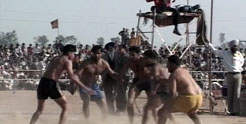 ddi-playing Canadian police officers to issues affecting the Sikh community from 1984 and post-9/11 hate crimes. There will also be short and feature films. For example, one on a young boy’
ddi-playing Canadian police officers to issues affecting the Sikh community from 1984 and post-9/11 hate crimes. There will also be short and feature films. For example, one on a young boy’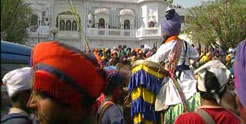 s struggle to keep his hair while his family fears the obstacles he will encounter and another on “… a young Sikh doctor struggling with the inequities of the American Health System and ultimately his own identity”. The Holy Duels of Hola Mohalla is a film looking at the Khalsa Panth.
s struggle to keep his hair while his family fears the obstacles he will encounter and another on “… a young Sikh doctor struggling with the inequities of the American Health System and ultimately his own identity”. The Holy Duels of Hola Mohalla is a film looking at the Khalsa Panth.
The films seem interesting both in content and presentation. The stories are grounded in the realities many of us encounter everyday. You can get a full listing of the films and their synopses here.
In the past, I have attended the “Spinning Wheel Festival” at one of its many North American stops and found it a great space for artists and art-enthusiasts to be exposed to Sikh creativity. I remember there being a panel discussion with the directors and the audience. We don’t have too many of these creative opportunities in our community even though we spend plenty of time and space advertising foreign medical schools in Poland, China, and the Caribbean.
I have found that some films are really hit or miss at these festivals, but it’s expected sense the focus is on cultivating and inspiring creativity; while, building a permanent Sikh film festival for years to come. Cash prizes are awarded to the “bests” in various categories. I have been told that the listing and quality of films varies across the different North American stops.
At the end of the day why not go, especially if it’s close by. I personally think it’s worth a visit as an act of supporting Sikh arts and learning about the various issues affecting our community. Sometimes we get too caught up in our own worlds and don’t realize these issues are taking place or we are in amidst of them and they become normal parts of our lives leaving very little room for reflection or exposure to others’ perceptions. Thus, it’s an 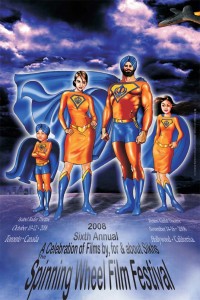 opportunity to get a fresh/new look at various issues.
opportunity to get a fresh/new look at various issues.
Lastly, the arts, from painting and photography to films and music, are our community’s soul! They help us speak in ways we can’t always articulate. So go save your soul and attend a Sikh artistic event! 
Okay, enough of the attempt at convincing … the other North American stops will be:
- Toronto, Canada from October 10-12, 2008 at the Isabel Bader Theatre.
- Hollywood, California from November 14-16, 2008 at the Writers Guild Theatre.
Are ya’ll thinking of going? What have your experiences been at the various Spinning Wheel Festivals? Does anyone know of other North American stops?
p.p.s. The Toronto and Hollywood poster is really interesting isn’t it … a conversation in of itself!
In light of the Indian government’s response to this past weekend’s bombings in Delhi, this video seems especially poignant (not to mention sweeet!).

[hat tip: chapati mystery]
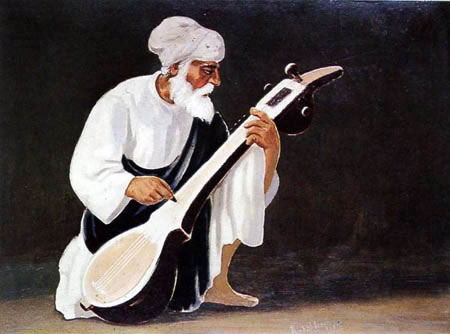 Unfortunately, and perhaps only for myself, I don’t remember the last time I visited one of my local gurdwaras and can say I was moved by the kirtan. Perhaps I feel that most (though not all) kirtan has become modernized to such an extent that it doesn’t really encompass the spiritual enlightenment that shabads were intended to. Actually, it was only after a recent visit to a Namdhari gurdwara that I truly felt that I had heard kirtan in its true element. For those of you who, like myself were unaware, Namdhari Sikhs believe that the only way to reach God is to sing in Raag, the mode of classical Indian music. For Namdhari Sikhs, the instruments they play and the style they sing in is very particular. They place a firm emphasis on rare instruments dating back to the 16th century, the time of Guru Nanak who continued the Vedic tradition of writing the holy scriptures in Raag.
Unfortunately, and perhaps only for myself, I don’t remember the last time I visited one of my local gurdwaras and can say I was moved by the kirtan. Perhaps I feel that most (though not all) kirtan has become modernized to such an extent that it doesn’t really encompass the spiritual enlightenment that shabads were intended to. Actually, it was only after a recent visit to a Namdhari gurdwara that I truly felt that I had heard kirtan in its true element. For those of you who, like myself were unaware, Namdhari Sikhs believe that the only way to reach God is to sing in Raag, the mode of classical Indian music. For Namdhari Sikhs, the instruments they play and the style they sing in is very particular. They place a firm emphasis on rare instruments dating back to the 16th century, the time of Guru Nanak who continued the Vedic tradition of writing the holy scriptures in Raag.
Gurmat Sangeet has always played a significant role in Sikh history and began in the 16th century as the musical expression of divine poetry and yet many of us have never been exposed to this form of kirtan. During our Gurus’ time, Gurmat Sangeet was devotional meditation and music and instruments were used as an accompianment.
Sikh music in the 16th and 17th centuries was comprised of the then-prevalent classical and folk music styles, accompanied by stringed and percussion instruments. The classical style was the devotional dhrupad style, a somber, deeply meditational style in which the text was of prime significance and the music played a supporting, albeit important role in the quest for Divine Essence. Folk music encompassed songs that marked various aspects of life – ghoriaan were sung at marriage, alaahniaan at death, and vaars to glorify brave warriors. [link]
It is said that Raags have a direct relationship to human moods; Soohi representing joy and seperation, Basant representing happiness, and Sarang, sadness. Information from the Sikh Music Heritage Institute states that Guru Nanak began Sikh music with the accompaniment of the rabab, a stringed melodic instrument; Guru Amar Das introduced the stringed instrument, saranda; and Guru Arjan Dev, developed the jori, a two-headed drum. During the 1920s a sharp decline in their use made them almost extinct. The harmonium took the place of stringed instruments and the tabla replaced the pakhaavaj and jori. There are various global efforts taking form to revive classical Sikh music. The Gurmat Sangeet department at Punjabi University, Patiala, the Raj Academy in the UK, and the Sikh Music Heritage Institute in California have dedicated resources to educating and training individuals to play traditional Sikh instruments with the hope that Gurmat Sangeet will be revived.
Guest Blogged by Mewa Singh.
A bit late, but every bit warranted.
Let me begin. I am a HUGE Rabbi Shergill fan. I went to a Dharmendra/Sunny Deol “concert” two years ago (why they are called ‘concerts’ I have no clue) and Rabbi Shergill was performing. I think I was the ONLY 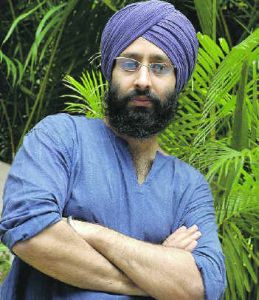 Rabbi Shergill fan in the audience and in certain parts of California that isn’t too surprising. Although my friends and family made fun of me, they were kind compared to the rest of the audience. The audience yelled their ever-so-kind “Eh ki bakwas hai? Bhangra Ga!” (What is this crap? Sing Bhangra!) and began to boo him off the stage in the middle of his ‘Chhalla’ performance. Although I love my hometown, sometimes we are stupid.
Rabbi Shergill fan in the audience and in certain parts of California that isn’t too surprising. Although my friends and family made fun of me, they were kind compared to the rest of the audience. The audience yelled their ever-so-kind “Eh ki bakwas hai? Bhangra Ga!” (What is this crap? Sing Bhangra!) and began to boo him off the stage in the middle of his ‘Chhalla’ performance. Although I love my hometown, sometimes we are stupid.
Rabbi’s first self-titled album played in my car for months straight. Despite the ridicule of all of my friends, I was mesmerized by his brilliance. In my own version of ‘elitism,’ I just thought they couldn’t “understand” Rabbi. How brilliant was this contemporary music artist not only recreating but reinterpreting classic poetic metrics and musical composition forms with current political and social content. While his “Bulla Ke Jana” garnered critical attention and success, for me his “Jugni” with its political content, “Totia Manmotia” for its social charge and reinterpretation of a whimsical Mughal-period popular dialogue between parrots, and the thrilling rendering of his Shiv Kumar Batalvi in “Ishtihar” sent tingles down one’s spine. Sepia Mutiny’s Amardeep criticized Rabbi’s earlier supposed “Sufi/Sikh spiritualist” image, however, such a reading could only be made by one that had never listened past “Bulla Ke Jana.”
Although three years in the making, Rabbi returns with a new album Avengi Ja Nahin (the website includes song samples, videos, and even lyrics). The album has 9 tracks and I have yet to listen to all of them. The cover song “Avengi Ja Nahin” is a nice love song. The other song to gain much attention is his “Biqlis” that provides a voice to the many voices lost during the anti-Muslim government-sponsored pogroms in Gujarat in 2002. The song is stirring, being both patriotic but critical.
Punjabis can argue whether Gurdas Mann’s classic Chhalla from the movie Laung Da Lishkara is the best or Rabbi’s new rendering. For my vote, I just want to add that Rabbi is on the world stage singing Punjabi (in his Jugni invoking that the solution to today’s problems was to invoke the Guru’s name), while during the 1980s and early 1990s Gurdas Mann went to Bombay and record plenty of Hindi content.
However, especially important for a Sikh audience would be a discussion on his song “Pagri Sambhaal Jatta.”
Going along with the theme of music which has been popping up all over TLH recently, I came across a documentary from the Asian Network discussing (what the presenter calls) the arrival of a new music scene in which religion is playing a large role in the work of British Asian artists. Now, “religious” music in this innovative sense may not be new to those of us who have been exposed to this type of music before, however as the documentary suggests, religion-focused music is becoming more mainstream and accepted (which, as will be discussed, can be a both positive and negative thing). There still exists the contradictory acceptance of religious music, however, with music promoting Sikh, Hindu, or Muslim values being viewed as conventional and any type of Christian pop/rock music seen as too radical. The question asked throughout the documentary is why is religious music “cool” for British Asians?
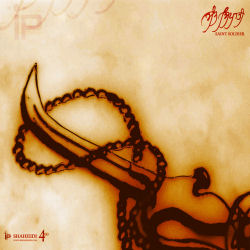 The argument is that an increasing number of youth are not attending Gurdwaras (or Mosques or Temples) and this type of music is much more accessible to this generation because of the medium in which the message is disseminated. Outlandish and Tigerstyle, two groups discussed in the documentary as promoting religious and political values through their music, are making music which is “real and more conscious” and by doing so, keeping the teachings of the religion alive. While we’re all familiar with Tigerstyle, Outlandish is a hip-hop group based in Denmark whose music includes themes about Islam and contemporary issues facing young Muslims in the west. For too long now, music within the Indian community has been lacking substance. While mixing religion with music is a challenge in secular communities in which these artists exist, there is an obvious desire for it too.
The argument is that an increasing number of youth are not attending Gurdwaras (or Mosques or Temples) and this type of music is much more accessible to this generation because of the medium in which the message is disseminated. Outlandish and Tigerstyle, two groups discussed in the documentary as promoting religious and political values through their music, are making music which is “real and more conscious” and by doing so, keeping the teachings of the religion alive. While we’re all familiar with Tigerstyle, Outlandish is a hip-hop group based in Denmark whose music includes themes about Islam and contemporary issues facing young Muslims in the west. For too long now, music within the Indian community has been lacking substance. While mixing religion with music is a challenge in secular communities in which these artists exist, there is an obvious desire for it too.
On the other hand, the documentary asks whether this type of music is further segregating British (or American or Canadian) Asians? The post 9/11 British Asian identity has largely been disintegrated into a British Sikh, British Muslim, and British Hindu identity. Is promoting religion-specific music going to augment this segregation? Are these artists such as Tigerstyle and Outlandish isolating listeners who may not be Sikh or Muslim? Or is this type of music somehow uniting us? Nusrat Fateh Ali Khan, for example, used Sufi music to cross boundaries amongst religious lines. His music is seen as uplifting and inspiring to people of all religions.
I have been receiving emails from a number of people announcing that Tech’s NEW ALBUM, titled 3rd World – his first in five years – will be dropping on June 24th. I know I (and Joolz/Suzy/Bobby) will be the first ones purchasing it!
—————
For those easily offended by foul language, please disregard this entire post. I am sure I will post more later; you can read those. FORGET THIS ONE. You’ve been warned….
I am a HUGE FAN of Immortal Technique. At a concert a few years ago, I was the only Sikh there, but he even acknowledged me in that small crowd. For those that don’t know about him, here is a bit of his wikipedia biography.
Felipe Coronel (born February 19, 1978), better known as Immortal Technique, is a Hip hop MC and political activist. He is of Afro-Peruvian and indigenous descent and was raised in Harlem, New York. Most of his lyrics focus on quasi-political issues. The views expressed in his lyrics are largely a mixture of commentary on issues such as poverty, religion, and racism. He also focuses on the harsh resulting realities of crime in the housing projects of New York City’s slums. [link]
In the summer of 2001, the bakwas sounds of Missy Eliot’s “Get Your Freak On” or Jay-Z’s “Izzo (H.O.V.A.)” filled the airwaves. In between that nonsense, I remember sitting in my friend’s car when the spoken word of Immortal Technique came pounding out of those Alpine Speakers. That first track was called “The Poverty of Philosophy.”
